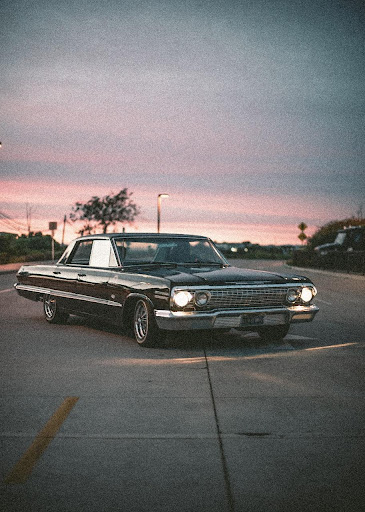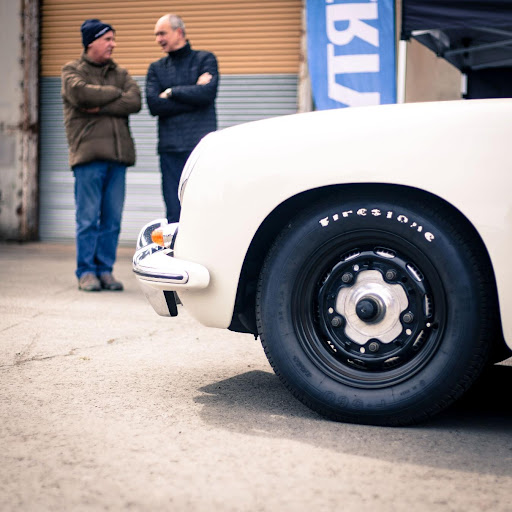Classic car restoration is a challenging yet rewarding process for any car enthusiast. You might be ready to jump in with both feet, but before you get too ahead of yourself, understanding what’s involved before you get started will prevent setbacks from occurring. While you’ll undoubtedly learn more as you move forward with your project, here are the most important things to consider before restoring a classic car, how to restore a classic car on a budget, and a step-by-step process for getting your car up and running.
Things to Consider Before Restoring Your Classic Car
Before you throw all of your efforts into the classic car restoration process, consider a few of these things to make your life easier in the long run.
The Planning Process
When it comes to planning, there are a few questions you need to ask yourself:
- What’s your budget for restoring a classic car?
- What’s your timeline for completion? Do you have a specific deadline in mind? Keep in mind that the budget will affect your timeline.
- Where are you going to be working on your classic car? Do you need a garage? Can you work on your car from home?
- Do you know the step-by-step process of restoring a classic car? Learn what to expect to decide if it’s right for you.
You don’t have to know the exact answers but getting a ballpark estimate will help you to be better prepared and less stressed. As your project develops, you can always go back and fill in the details.
What’s Your Classic Car Restoration Budget?
If you’re on a tight budget, restoring your classic car is going to require a bit more thought. Ultimately, you need to ask yourself how much you have to spend on the entire process. From here, you can allocate a specific amount of cash for your car, tools, and parts.
Before you buy a classic car, determine if you’re going to restore it fully back to its original condition for driving purposes, or if you’re just planning to have it in your collection for occasional driving.
If you’re undergoing a full classic car restoration, remember that you’re going to need parts along the way. Plus, if you don’t want to do the entire process yourself, you may need to stump up some extra cash for help.
You may already have a car in mind which means you’ll likely have an idea of how much you intend on paying. If your budget is exceptionally tight, scout around local junkyards, online selling sites, Facebook Marketplace and Autotrader for cheaper classic car finds.
TIP: For a more detailed guide to establishing your budget, check out the Beginner’s Guide to Restoring a Classic Car.

How to Find the Right Classic Car to Restore
When it comes to buying a classic car, your budget is likely to dictate the type of car you purchase. If you have a specific car in mind, you can use a website like Classic Car Value to give yourself an idea of how much you might pay.
TIP: Check your local directories and listings, and don’t overlook sites like eBay or CraigsList in your search to purchase a project car.
It’s worth keeping in mind that most old cars aren’t in great condition, so shop around first and do a thorough inspection before buying.
Some things you should know are how long the seller has owned the car, how many owners it’s had, and if it has a title. Having documentation ensures it’s not stolen or owned by another person.
TIP: For more details on how to know if a project car is a good choice for you, check out the Beginner’s Guide to Restoring a Classic Car.
SITES TO SEARCH FOR A PROJECT CAR
CarsOnline.com – Project Cars for Sale
ClassicCars.com – Classic Cars for under $5,000
AutoTrader.com – Classics Listings
How to Find Used Car Parts and Tools for Your Restoration
If you’re looking to save money, you can find items for reusing or repurposing in a variety of places, including local junk yards, eBay, Facebook Marketplace, and brick-and-mortar stores. Classic car events and meetups are also good places to find used items for restoration.
Get all the details on generic and specific tools you’ll need in the Beginner’s Guide to Restoring a Classic Car.
How to Keep Your Car Protected During the Restoration Process
Keeping your car protected from weather, theft, and vandalism, is essential. A few ways to protect your classic car project include:
- Weatherproof/heated garage – this is the best option, especially during hot summers and cold winters. Using a lock will also keep it secure.
- Wooden unit or barn – just make sure it’s free from dampness, and well-ventilated, to prevent moisture from building up inside the car.
- Car cover – this won’t protect from theft, but it will prevent sun damage, water spots, and external rust.
- Gazebo – ideal for sun protection, but not for colder months.
The Step-by-Step Process of Restoring a Classic Car

Even if you prefer to approach a project with a fly-by-the-seat-of-your-pants kind of attitude, a certain degree of planning is essential. That includes dismantling the car in order, keeping parts organized, and working your way through rebuild and reassembly in the right sequence.
Here is an overview of the typical process.
1. Strip the Car
The first step is to strip the interior and dash, including the wiring, engine gearbox, external panels, windows, and headlights.
SHOP: Vintage and Classic Car & Truck Headlights
2. Check the Condition of the Brakes and Consider an Upgrade
Before you remove the brakes, make sure you check their condition to determine if they need replacing. Worn-out brakes are usually noisy. If the brake pedal is difficult to push down, then you’ll need to replace the brake booster. Once removed, make a note of any replacement parts that may need ordering.
You have a choice here to maintain your current OEM drum brakes or perform a disc brake conversion. Even if you go the repair route, you may want to plan for a disc brake conversion down the road. Here’s a video outlining the process.
LEARN MORE ABOUT COMMON BRAKE PROBLEMS
How Does a Brake Booster Go Bad? (Signs of Failure)
The Basics of Brake Noise: The Quiet Braking Checklist
Why is My Brake Pedal Soft? How to Diagnose and Fix
3. Apply Powder Coatings to Non-rusty Metals
Powder coating can be applied to bumpers, wheel trims, and other metal parts. As powder coats are highly durable, they’re a much better alternative to paint.
RELATED: Using Powder Coating in Your Car Restoration
4. Strip the Paint and Remove Any Rust
Strip paint with a sander or paint stripper. Next, remove any parts that are rusty. The most effective option is to replace the part completely. However, treating it works well in the short-term.
5. Seal, Prime, and Paint
Sealing underneath the car prevents corrosion and chips. Once you’ve done this step, you can begin to fill, sand, and prime the car for painting. Remember to eliminate any dust particles before you paint your car.
6. Check the Engine
The engine can be an expensive part to source. Ideally, if you’re sourcing a used engine, it’s best to find one with low mileage. You’ll also need to consider the water pump, valves, and timing chain, as these may need replacing too.
7. Check Additional Car Parts
Check all remaining parts, from the radiator to the air conditioning system. These parts may require powder coating or painting.
8. Add Safety Elements
Most classic cars are without contemporary safety elements, such as airbags and seatbelts, so these will need installation.
9. Rewire and Reassemble
The final step is to rewire the car and reassemble the brakes, suspension, gearbox, cooling system, and dashboard. Refit the lights and windows. Work on the interiors, including upholstery.

Is Classic Car Restoration the Right Project for Me?
Classic car restoration is a thrilling process for many. And while there are a lot of things to be considered, don’t let that scare you away from giving it your best shot. With a well-laid out plan, organized timeline, budget expectations, and general idea of the step-by-step process, you can be on your way to completing the classic car project of your dreams.

